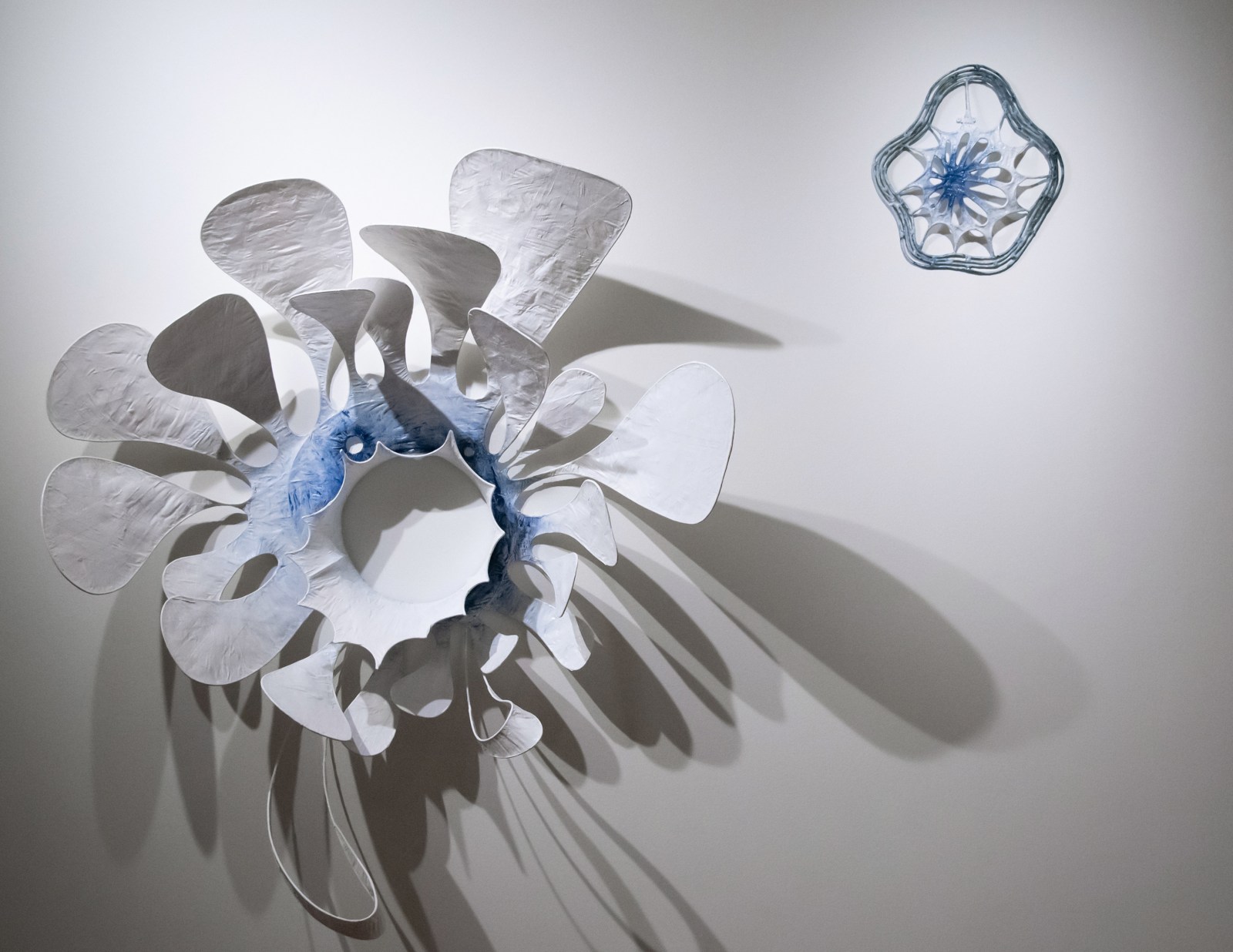
When the pandemic struck, Ranjani Shettar was at her home in a village in Karnataka's Shivamogga district, 300km away from Bengaluru. "I was not in the middle of putting up a show, not traveling, not stuck in an airport, so there was no chaos around me," she says. "I had access to my studio, which is just a stone's throw from my house, and my art continued."
The oasis of calm that Shettar lives and works in is the result of a deliberate choice she made over a decade ago. Just as her career was taking off, she decided to leave Bengaluru, the city she has grown up in, and move to rural Kamataka. "At the time, it was unheard of to do such a thing," she says. "A lot of people, including my friends and family, felt I was throwing away everything." But Shettar was determined. It would not be a sustainable way of living if everyone moved to the cities, she felt. Moreover, it was important that art and culture moved beyond the usual urban clusters.
"In any case, what's the need for an artist like me, who has not much to do with the city, to live in one?" Shettar asks. "To me, the definition of a good city is one that has good institutes of art and culture, public transport and infrastructure." With the rapid pace of urbanization, Bengaluru had lost its pristine beauty. Shettar was pained to see overcrowding and traffic congestion take over the city's luscious green cover. Village life, in contrast, deepened her bond with nature and her practice became immersed in the nuances of her surroundings.
In the last few years, Shettar has shown her work across the world, including The Metropolitan Museum of Art in New York, where her installation, Seven Ponds and a Few Raindrops was the centerpiece. Made with beeswax, lacquer, organic dyes, steel, cloth and other non-toxic materials, her poetic and haunting work forges a vital link between art, nature and society. In spite of their deceptively ethereal lightness, the objects need delicate manipulation, are often suspended from the ceiling, and aligned to cast shadowy patterns on the floor.
"I have a studio-based practice. I have one assistant, who isn't coming in at the moment," Shettar says. "That hasn't changed things much for me because there's a lot I have to do myself." While she is deeply affected by the human cost of the pandemic, it would be artificial for her to respond to it directly through her art, Shettar says. Her work doesn't have explicit messages-its reception is contingent on the viewer's knowledge of the world, but even without such an awareness, there are other affective channels to connect with it.
Shettar's art is innately experiential. You have to get physically close to it to feel its potency. Virtual screens can't convey its intensity. "Right now I am in the middle of projects, I am committed to them. My artworks are experiential in nature and I expect there will be challenges when I am ready to show. Art has always had space in societies, no matter how difficult the times were. I imagine there will always be space for good art," she says. She is hopeful, though, that having overcome many impediments and difficulties in the past, the art world will thrive again in the future whenever that is. As of now, Shettar says, she's appreciating the things that are still beautiful around her, trying to be one with the moment. And, of course, there's always work to be done. "A bird won't stop singing just because there isn't anyone to listen to it, will it?" she says.
-SG